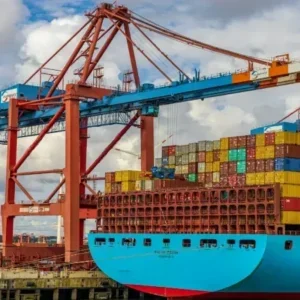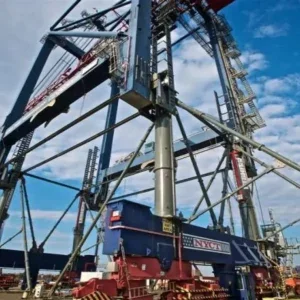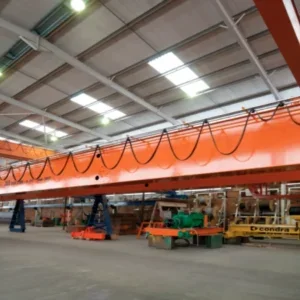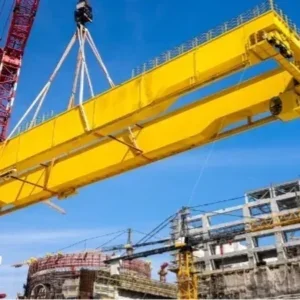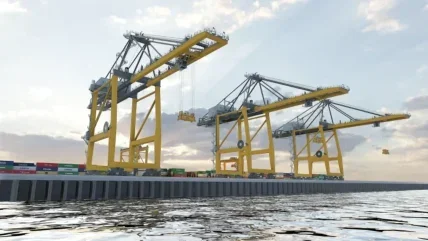
In recent years, the profound effects of biodiversity loss and ecosystem collapse have been increasingly recognised as critical issues that extend beyond environmental circles and into various industries. The overhead lifting equipment and material handling sector is no exception. As ecosystems deteriorate, the repercussions for industrial operations, supply chains, and long-term sustainability become more pronounced. This article delves into the causes and consequences of biodiversity loss and ecosystem collapse, examines their impacts on the industry, and suggests strategies for mitigating these effects.
Understanding biodiversity loss and ecosystem collapse
Defining biodiversity and ecosystems
Biodiversity refers to the variety of life on Earth, encompassing different species, genetic variations, and ecosystems. Ecosystems are communities of living organisms interacting with their physical environment, providing essential services such as air and water purification, pollination, and climate regulation.
Causes of biodiversity loss
Several factors contribute to the decline of biodiversity:
- Habitat Destruction: Urbanisation, deforestation, and agricultural expansion lead to the loss of natural habitats.
- Pollution: Industrial activities and waste contribute to air, water, and soil pollution, harming wildlife.
- Climate Change: Changes in climate patterns disrupt ecosystems and species survival.
- Overexploitation: Unsustainable hunting, fishing, and resource extraction deplete species populations.
- Invasive Species: Non-native species introduced to new environments can outcompete, prey on, or bring diseases to native species.
Ecosystem collapse
Ecosystem collapse occurs when ecosystems lose their functionality and cannot support the biodiversity and services they once did. This collapse can be sudden or gradual, resulting from compounded pressures such as those mentioned above.
Impact on the overhead lifting equipment and material handling industry
Raw Material Sourcing
Biodiversity loss and ecosystem collapse can significantly impact the sourcing of raw materials:
- Resource Availability: Ecosystem degradation can lead to the scarcity of natural resources like timber, metals, and minerals essential for manufacturing equipment.
- Supply Chain Disruptions: Environmental degradation can disrupt the extraction and transportation of raw materials, leading to supply chain instability.
Operational challenges
Environmental changes can pose direct operational challenges:
- Weather Extremes: Increased frequency of extreme weather events can disrupt operations, damage infrastructure, and delay project timelines.
- Site Conditions: Changes in land use and ecosystem health can affect site conditions, making it more challenging to operate heavy equipment.
Regulatory and compliance issues
As awareness of environmental issues grows, so does regulatory scrutiny:
- Stricter Regulations: Governments may impose stricter environmental regulations and standards, increasing compliance costs for companies.
- Sustainability Requirements: There is a growing expectation for companies to adopt sustainable practices, which can necessitate changes in operations and supply chains.
Reputation and market position
Environmental responsibility is increasingly linked to corporate reputation:
- Brand Image: Companies perceived as environmentally responsible can enhance their brand image and attract environmentally conscious customers and partners.
- Investor Expectations: Investors are placing more emphasis on Environmental, Social, and Governance (ESG) criteria, influencing funding and investment decisions.
Strategies for mitigating impact
Sustainable Sourcing
Adopting sustainable sourcing practices is crucial:
- Certified Materials: Source materials from certified suppliers who adhere to sustainable practices, such as those certified by the Forest Stewardship Council (FSC) or similar organisations.
- Recycled and Renewable Materials: Use recycled or renewable materials to reduce dependence on natural resource extraction and mitigate environmental impact.
Environmental impact assessments
Conducting thorough environmental impact assessments (EIAs) can help identify and mitigate potential impacts:
- Site Selection: Choose sites with minimal ecological disruption for new operations.
- Mitigation Plans: Develop and implement mitigation plans to address identified environmental impacts.
Energy efficiency and emissions reduction
Improving energy efficiency and reducing emissions can mitigate environmental impact:
- Energy-Efficient Technologies: Invest in energy-efficient machinery and equipment to reduce energy consumption and emissions.
- Renewable Energy: Incorporate renewable energy sources, such as solar or wind power, into operations.
Biodiversity conservation initiatives
Participating in biodiversity conservation initiatives can enhance corporate responsibility:
- Habitat Restoration: Engage in or support habitat restoration projects to offset environmental impacts.
- Conservation Partnerships: Partner with conservation organisations to support biodiversity initiatives and enhance community engagement.
Circular economy practices
Adopting circular economy practices can reduce waste and resource consumption:
- Product Lifecycle Management: Implement product lifecycle management practices to design for durability, reuse, and recyclability.
- Waste Reduction: Develop waste reduction programmes that focus on reusing and recycling materials.
Case studies: industry responses to environmental challenges
Case study 1: sustainable sourcing and certification
A leading manufacturer of overhead cranes committed to sourcing steel from suppliers certified by the ResponsibleSteel initiative. This commitment ensured that the raw materials used in their products were sourced responsibly, with minimal environmental impact. The company also invested in recycled steel, further reducing its reliance on virgin materials.
Case study 2: energy efficiency upgrades
A material handling equipment company undertook a comprehensive energy efficiency upgrade of its manufacturing facilities. By installing energy-efficient lighting, optimising HVAC systems, and investing in energy-efficient machinery, the company significantly reduced its energy consumption and greenhouse gas emissions. These efforts not only reduced operational costs but also enhanced the company’s reputation as an environmentally responsible manufacturer.
Case study 3: biodiversity offsetting and conservation
A logistics firm specialising in material handling equipment recognised the environmental impact of its operations on local ecosystems. To mitigate this, the firm partnered with a conservation organisation to support a biodiversity offsetting programme. The programme involved restoring degraded habitats and protecting endangered species in areas affected by the firm’s activities. This initiative improved the firm’s environmental credentials and strengthened community relations.
Future outlook and industry adaptation
Innovative technologies for sustainability
The adoption of innovative technologies can drive sustainability in the industry:
- IoT and Big Data: Utilise IoT and big data analytics to monitor and optimise energy use, emissions, and resource consumption.
- Automation and Robotics: Implement automation and robotics to enhance efficiency and reduce waste in manufacturing processes.
Collaboration and stakeholder engagement
Collaboration with stakeholders is vital for addressing environmental challenges:
- Industry Collaboration: Participate in industry associations and initiatives focused on sustainability and environmental responsibility.
- Stakeholder Engagement: Engage with local communities, regulators, and environmental groups to align efforts and address shared concerns.
Long-term sustainability planning
Developing and implementing long-term sustainability plans can ensure continued industry resilience:
- Sustainability Goals: Set ambitious but achievable sustainability goals and regularly review progress.
- Integrated Reporting: Adopt integrated reporting practices that encompass financial, environmental, and social performance metrics.
Conclusion
Biodiversity loss and ecosystem collapse present significant challenges to the overhead lifting equipment and material handling industry. By adopting sustainable sourcing practices, improving energy efficiency, participating in conservation initiatives, and leveraging innovative technologies, companies can mitigate these impacts. A proactive approach to environmental responsibility not only safeguards operations and supply chains but also enhances reputation and market position. As the industry continues to adapt, collaboration and long-term planning will be essential for ensuring a sustainable and resilient future.


